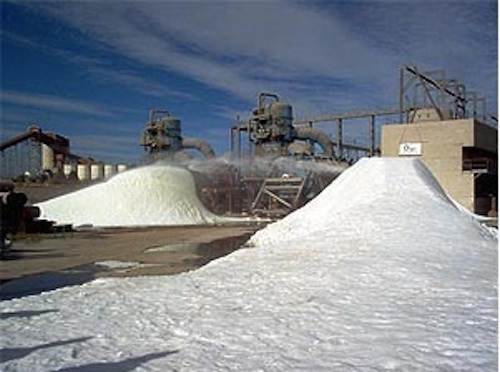Depending on your particular political ideology, you may embrace or deny climate change — that’s all well and good, but the science behind it is there and rather indisputable. Now it’s a question of who benefits and who loses, which Shell (oil company) even outlined a few years in a document. One option was called “Blueprints.” That’s where the world starts making better energy choices. The other option was called “Scramble.” That’s where politicians can’t pass anything related to energy because it’s too hard (and thus they won’t get re-elected), so we start adopting our newer, hotter, weirder-weather climate. We went with “Scramble,” at least in the short term, and Shell executives now tell crowds of people that they’re “rooting” for endless summers in the Arctic. Interesting.
In the pantheon of global warming meets economics stories, though, none might be weirder than the fact that the Alps — which attracts 80 million tourists per year — is essentially being saved by Israel, one of the climates on Earth probably least associated with snowfall.
First, here’s the essence of the problem:
But across Europe, across the world, an economy is imperiled. In early 2007 slopes were bare the week before the famed Hahnenkamm World Cup race in Pitztal’s neighboring Kitzbühel, and helicopters had to fly in 160,000 cubic feet of snow at a cost of more than $400,000. That same year, a British investor bought Switzerland’s low-lying Ernen ski area for 1 Swiss franc; resort managers in Whistler, British Columbia, began using computerized global warming simulations to choose the site of their next lift (answer: uphill); Bolivian scientists declared that the country’s lone ski area, 17,388-foot Chacaltaya, would lose its glacier entirely within three years (they’ve been proven right); and the Australian-designed, indoor revolving Ski-Trac was loudly promoted “as the answer to the problem of climate change.” Dome-encased indoor ski areas, including the 700-vertical-foot SnowWorld Landgraaf in low-lying Holland, were officially added to the European race circuit the following winter.
That all makes sense. Israel Desalination Enterprises, though — the company working with Pitztal in the Alps — was actually born in a Siberian gulag:
And in Siberia it’s very cold, but the summer did not have any rain. The gulag was close to the Arctic Ocean.” The labor camp needed a source of drinking water. So in the summer, Ophir said, “they would open a gate and let seawater enter a lagoon. At the end of summer they would close the gate, and the upper layer of the lagoon would freeze.” When it did, the salt and water were forced apart. “By nature, ice crystals from seawater are pure water,” he explained. When summer came again, the surface began to melt, flushing any residual brine from the ice pack, and Zarchin and the other prisoners began pumping liquid from the saline depths of the lagoon. They measured its salt content as they pumped, and once it was low enough, Ophir said, “they closed the gates and let the sun melt the rest of the ice—and they had drinking water.” He looked at us proudly. “So you see,” he said, mangling a phrase I heard everywhere in Israel, “need is the father of invention.”
In 1960, Look magazine called what IDE worked on — their desalination work and its possibilities with winter weather — “possibly more important than the atom bomb.” (Whoa.) By 2009-2010, Pitztal (in the Alps) had bought their snowmaker, and they were opening for the season by September 12. Cue the IDE guys:
“We managed to sell snow to the Eskimo,” Ophir said.
“Now I want to sell sand to the Bedouins,” said Tessel.
Here’s where desalination stands via IDE, and could be headed:
Today, IDE is responsible for 400 of the world’s desalination plants, including what was until recently the biggest, most efficient, and most celebrated: the 86 million-gallons-per-day (mgd) plant in Ashkelon, Israel, next to the Gaza Strip at the edge of the Negev. After Ashkelon, IDE won contracts to build the largest plant in China, a $119 million job; a 43 mgd plant in desiccating Australia, a $145 million project; and a giant 109 mgd plant north of Tel Aviv in Hadera, costing $495 million. IDE is also part of the consortium building two contentious 50 mgd plants in Carlsbad and Huntington Beach, Calif. An engineer at the company leading the construction, Poseidon Resources, told me that in theory it could create water with the exact mineral content and taste of San Pellegrino. “People will drink Pellegrino out of the tap,” he said, “and they’ll take showers in Pellegrino.”
Most of these stories come from the book Windfall, about the business side of global warming. I do actually think desalination — even though it’s carbon and energy intensive — will become a big thing of the future. (For reference, producing an eight-ounce glass of water requires 10,000 joules of energy via desalination.) You’re going to get down to D-Day on Lake Mead in the next 20 years, and the ocean will seem like a solid option. Clearly, we’ve transitioned from “Blueprints” to “Scramble,” and now we’re all just trying to make our way in an adjusted world.

One Comment
Comments are closed.